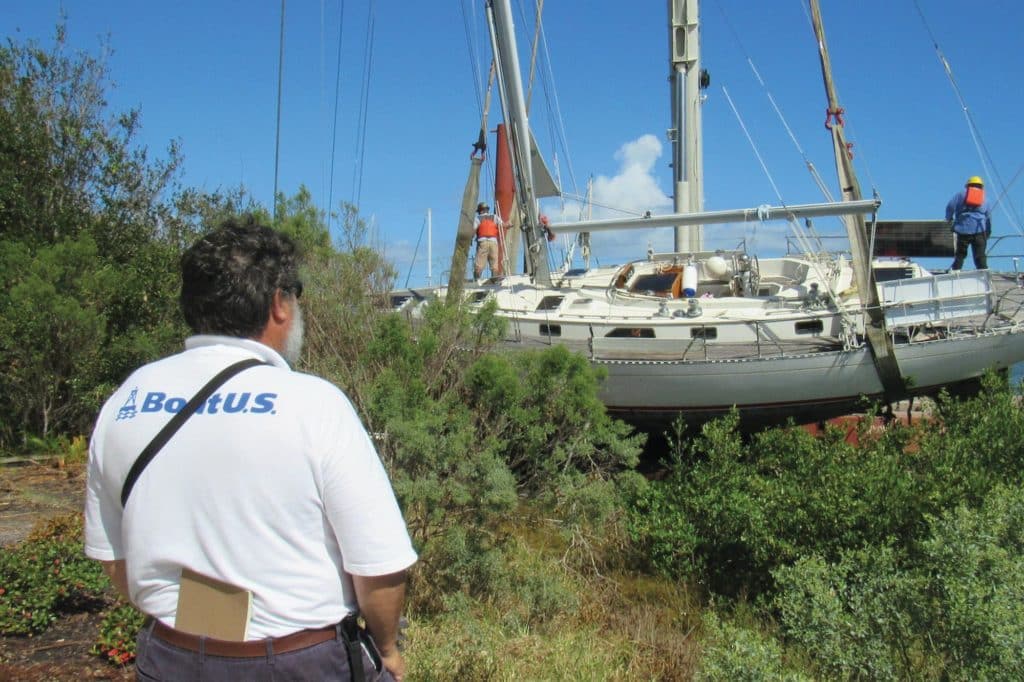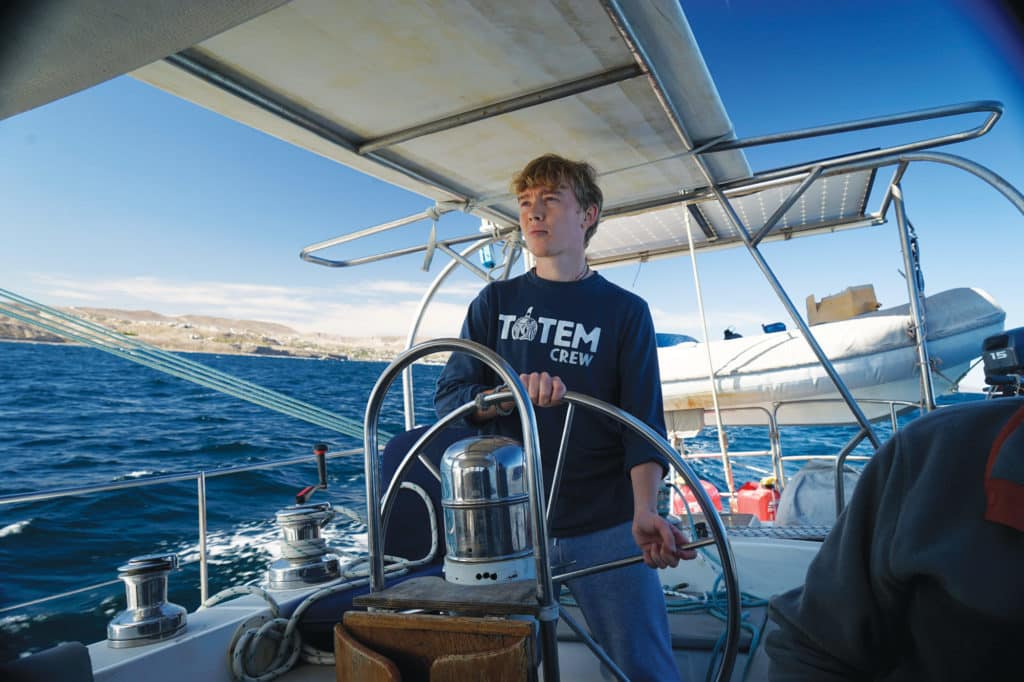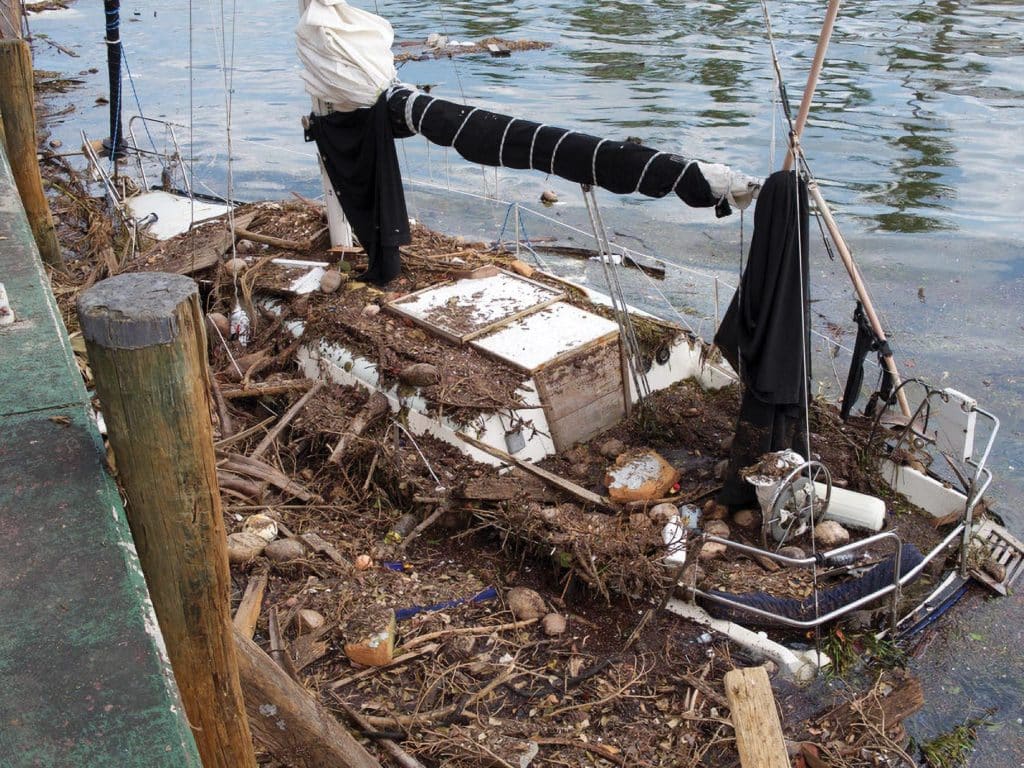
If you’ve been on the hunt for a marine insurance policy over the past year or so, you likely already know that it’s a challenging market. Sailing and cruising groups on social media and web forums are filled with frequent posts about people struggling to find coverage, keep coverage, or just afford it. It’s a problem that seems to be affecting beginning cruisers and circumnavigators, with old boats or new. So what gives? How did the situation get to this point, and what can sailors do to protect their dream?
“I’ve been doing this for 30 years, and I’ve never seen a market this hard,” said Morgan Wells, a yacht-insurance specialist with Jack Martin and Associates. “There’s been a great reduction in the number of insurance companies writing boat and yacht insurance, and the international-cruiser segment of the market has been more adversely affected, particularly for boats anywhere on the US East Coast, and even more so for people looking for new policies for Florida, the Bahamas and the Caribbean.”
Indeed, cruisers across the spectrum of locations and sea time are feeling the pinch. When looking to renew their current insurance policy last year, circumnavigators Behan and Jamie Gifford, who live aboard their 1982 Stevens 47, were met with a surprise. “When it came time to renew, we were quoted more than double our cost for insurance the year we planned to cross the Indian Ocean, 2015—an arguably very risky navigational area—and we now had the added requirement of a third adult for passages,” Behan said. “In the end, we didn’t renew at all, and currently have liability-only insurance. I’m not pleased about that and hope to get back to full hull insurance when the market comes around.”
Owners of newer boats don’t seem to be having an easier time either. “We bought a 2015 Jeanneau 64 in October 2020,” Dan Stotesbery said. “I have a lot of experience sailing, but none of it was logged, so I don’t have any credentials like a Yachtmaster or anything like that. My wife has even less experience. When we heard it was tough getting insurance, we were definitely worried about getting covered. Complicating the situation was that the boat was in Turkey, and I needed to sail it across the Atlantic to get to my wife and family. We reached out to the company that insured our house to see if they could find us a company that would insure the boat and especially the crossing. We received two quotes back and ended up getting insured with Concept Special Risk. They did put in a lot of stipulations, like we needed to have a captain for the crossing and at least two other people with bluewater experience, a list of countries we aren’t allowed to go in, and a 250-miles-from-land limit once the crossing was complete. It was extremely expensive, and there was an additional cost for the crossing.”

Changing Marketplace
So how did it get to this point? “We need to put it into context of a market that was very soft for many years—underwriters were looking for business,” Wells said. “There was a bit of a hiccup in the mid-2000s with some fairly significant storms, but generally it didn’t cause much change, and underwriters were still looking for ways to say yes. But then in 2017 came hurricanes Irma and Maria, then Dorian in 2019—these were extremely large losses to very large fleets of boats. Since 2017 we have seen the market flip from a soft to a hard market, and in fact, a very hard market by early 2021. We really have a big change now with fewer insurance companies and greater demand for insurance. And the pricing is much higher than it was a year ago. Irma and Maria showed the vulnerability in the market.”
Laura Lindstrom-Croop from Legacy Underwriters, noted that “many insurance companies left the Caribbean market in 2019-20. Pantaenius America was the first to leave,” she said. “The agency that I work with had YachtInsure, which lost its underwriter, Aspen Insurance, last summer. They have recently secured a new carrier, Clear Blue Specialty, that is writing new business but has new guidelines. Our second underwriter, Concept Special Risk, lost its company, Great Lakes Insurance, on January 1, 2021, but now it has a new company, Clear Springs Property and Casualty, that is writing new business with new guidelines.”
Suzanne Redden, mid-Atlantic branch manager for Gowrie Group, has had a similar experience. “Traditionally, when we would have someone coming in with a sailboat who wanted to do extended cruising, we had five, six, seven…at least that many companies who were willing to write that policy,” Redden said. “So there really wasn’t too much of an issue finding coverage for the customer, depending on where they wanted to go and their level of experience, that sort of thing. What we’re really struggling with now—and it’s a struggle—is that so many carriers have basically pulled out that our options are very limited as far as who is willing to write Caribbean navigation and worldwide navigation. Our choices are few. And what happens then is, of course, the prices go up because the company’s philosophy is ‘no one else wants to write here; we’ll write here, but this is what our actuaries tell us it’s going to cost to allow us to do that.’ So that’s why the rates have gone up.”
The cost to insure his Jeanneau 64 was definitely a bit of a surprise to Stotesbery: “The policy had to be paid upfront. That was the biggest surprise to us because we are used to paying car insurance monthly. This is also a hurdle that I think can be hard to overcome for some people. Not a lot of people have that kind of cash on hand to just fork out.”
Read More: How-To
Underwriting Difficulties
Along with higher costs, Redden also pointed out that the underwriting has changed a lot too. “Where before you would have had somebody who maybe had just a year or two experience, or they had just bought a boat, more companies would have been willing to let them take a trip. They look at it much more closely now when a new submission comes in. That’s made it more difficult, I think, for that sort of person to find insurance.”
According to Emma Whittemore, a service manager for BoatU.S./Geico Marine Insurance, underwriting has become much more sophisticated. “With the growth of data, insurance companies can really tell what group is a high-risk group,” she said. “We’re monitoring a lot more to make sure that the right people are behind the helm on these big, 35- to 60-foot boats. We want to make sure it’s not these customers’ first boat, and that they really know what they’re doing. Underwriting is fluid, but in general we always like to look at the ownership experience.”
This has been a particularly vexing problem for potential cruisers. Dana Fairchild and her husband live in Minnesota and have been planning for their cruising dream for the past few years. The couple has taken ASA sailing courses and chartered on Lake Superior but never owned their own sailboat. “Our cruising plans are to buy a boat large enough to live aboard; a 35- to 38-foot Island Packet is what we have in mind,” she said. “Due to the price point of Island Packets, we are looking at models from the 1990s. We plan to keep it on the East Coast of the US—somewhere above the hurricane zone during hurricane season, and probably down to Florida in the winter—for the first six months to a year while getting comfortable with the boat and used to the liveaboard lifestyle. After that we want to head to the Bahamas for a while, and eventually work our way down to the rest of the Caribbean and stay there.”
While the couple hasn’t purchased a boat yet, they’d heard the news that insurance might be difficult to find, so they reached out to a few companies to explain their plans and intended boat. “The short answer to what we’ve been hearing from insurance agencies is no. The reason for this is predominantly that we have not owned our own boat that is of comparable size, or at least within 10 feet. They don’t take into consideration that we have sailed and chartered boats of the same size, but really only want to see that a boat of comparable size was titled to us for at least two years”

Looking Ahead
So when faced with a denial, a notice of nonrenewal or a steep increase in premiums, what can a cruiser do? Is there coverage available? “What I am seeing, you have more choices if you limit your cruising to the US East Coast down to the Turks and Caicos,” Lindstrom-Croop said. “If you go to the Eastern Caribbean, you have fewer carriers, and some are writing coverage that doesn’t include hurricanes.
“I think cruisers are going to have to be patient and flexible. Also, update your sailing resume so when you shop around, you are giving the company a reason to give you the maximum credit available. Lower rates are probably not going to happen for a couple of years, climate change is weighing heavily on insurers, and the large number of storms recently is worrisome.”
Communication is crucial. Each of the insurance professionals I spoke with made it clear that underwriters are looking much more closely than in years past, and detailed sailing resumes and hurricane plans can help your chances. For newer cruisers, scaled-back sailing plans could help as well because finding coverage for a smaller cruising area will likely be much easier than, say, the entire East Coast and Bahamas. And for older vessels, a survey might be required for renewal.
“Some of the companies have gone to where they won’t write a boat over 40 years old,” Redden said. “Gowrie Group offers the Jackline program, which is a cruising program through Markel Insurance, which is really one of the last US companies still doing extended cruising, but they’re very restrictive on what they will write and how they’ll write it. But they will take older boats. Experience is the key.”
“It is harder to insure an older boat, but it can be done,” Lindstrom-Croop said. “There are just fewer markets. An older boat needs to be maintained well and have a current survey, within three years. I like to submit the survey along with the application when marketing so the underwriters can see the boat.”
For the time being, it seems that cruisers, such as Stotesbery, who currently have—albeit expensive—coverage are doing what they can to keep it. “We have had several major repairs to do on the boat, which we probably could have put in a claim for, but we are too worried about getting dropped or not covered next year, so we just paid for the repairs,” he said. “So it’s sort of a Catch-22. Unless we have a catastrophic type of claim, we don’t want to make one, but we still pay the high premium without really being able to take advantage of the protection. We will definitely start shopping again once we get closer to our renewal date. Unfortunately, there just aren’t a lot of insurance choices out there, so it is quite limiting, and they hold all of the cards.”
Others, such as the Giffords, are going without full coverage for now, while potential cruisers, such as the Fairchilds, might need to put their dream on hold. “As for how this is impacting our plans, it has really made us start to second-guess that this is even a possible plan. We have become discouraged, and this has really put a halt to most of the steps we were taking,” Fairchild said.
Wells, Redden and Lindstrom-Croop are optimistic for things improving in the insurance market over the next year or so, but all emphasize having patience. “We’re hoping that things will change for the better,” Redden said. “We’ve got some companies now that pulled out that are coming back, but it’s a very slow process.”
Jennifer Brett is CW’s senior editor.








